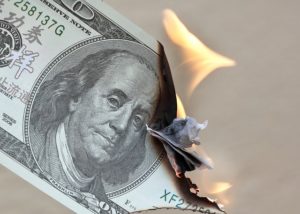A few days ago I was sitting in a recently opened, neighborhood coffee shop with a friend who makes a living evaluating businesses and business units. During our conversation he and I began discussing how much money a coffee shop might cost to operate. After running some calculations relating to things like overhead, average transaction size and profit margin, we eventually concluded that this particular store would need to serve about one customer every 2 minutes—or 30 customers per hour—to pay the bills and provide an acceptable return to the gentleman who owned and operated it.
After coming up with these numbers we decided to monitor activity at the shop’s counter, and over the course of the next hour noted two things: 1) walk-in customers were being served in an average of 3 minutes, and 2) the fastest service any customer received during our observation period was 2.5 minutes. Curious about the owner’s take on this, we flagged him down (he was stocking shelves) and asked how many people he needed to serve each day. His response was both surprising and frightening: “I guess I never thought about it that way . . . but I know what needs to be in the register at the end of the day.”
The problem was obvious: under a best-case scenario the shop was capable of serving only 24 customers per hour, which was less than our calculated break even level. And even if the line of customers stretched out the door (which at one point it did) this particular coffee shop would barely generate enough revenue over the long-term to break even, much less provide a decent profit. It turns out the cause of the problem was nothing more than a lack of infrastructure, as the owner was expecting employees to prepare over 200 shots of espresso per day from a single, highly manual (and very small) espresso machine. But with no idea as to how many customers he needed to serve each day, the owner had little reason to believe there was an issue to begin with.
The interesting thing about this story is that it doesn’t just relate to coffee shops, and can apply to any small company in literally any industry. The lesson is this: small companies MUST find ways other than revenue to measure what they’re doing. Deciding you want to grow your company to $15 million by 2012 is an admirable goal . . . but if you weren’t hitting it, would you know WHY? How many small company managers know exactly how many of each product and service they need to sell to reach a goal? Or how many customers they need to touch? Or how many emails the marketing department needs to send? Or how many calls their sales people need to make? Or how many new employees must be hired? Surprisingly few.
Developing metrics for growth and measurement is the heart and soul of the small company planning process. In the coming months I plan to write about specific strategies and techniques for developing and implementing real-world metrics for marketing, sales, and product development—as well as executive-level metrics for decision-making and financial planning. Please check back on occasion, and feel free to email me directly at eric@thesmallcompanyblog.com if you have any specific types of metrics you would like me to cover.




